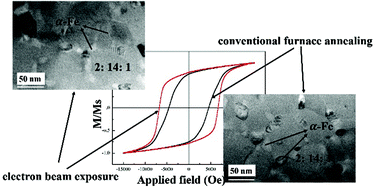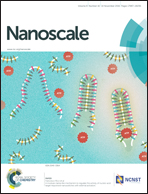Synergetic crystallization in a Nd2Fe14B/α-Fe nanocomposite under electron beam exposure conditions
Abstract
Nd2Fe14B/α-Fe nanocomposite magnets are prepared through electron beam exposure with a greatly reduced annealing time of 0.1 s. This is by far the most effective approach due to the effect of an extremely high heating rate featuring a rapid thermal process. The impact that the rapid thermal process has on crystallization is expounded by the introduction of the Landau model and Langevin dynamical simulations. The change of crystallization sequence from the α-Fe phase preceding the Nd2Fe14B phase under conventional annealing conditions, to synergetic crystallization under electron beam conditions is investigated. Synergetic crystallization results in more intense interaction between the α-Fe phase and the Nd2Fe14B phase in order to refine the microstructure as the fraction of Fe increases within our addition range. Improved uniformity, and shifts in the microstructure and distribution of the α-Fe phase contribute to the improvement of the magnetic properties. Compared with conventional furnace annealing ones, the magnetic properties of samples under electron beam exposure conditions are improved. For the Nd10Fe83.3B6.2Nb0.2Ga0.3 alloy, coercivity is enhanced from 4.56 kOe to 6.73 kOe, remanence ratio increases from 0.75 to 0.79, and a superior squareness of the hysteresis loop is achieved.


 Please wait while we load your content...
Please wait while we load your content...